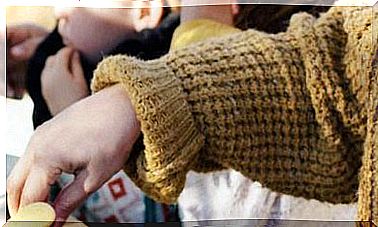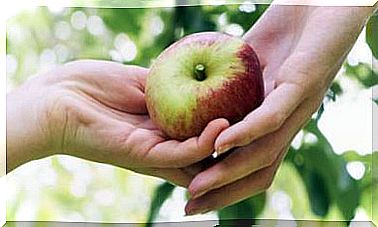10 Questions And Answers About Infant Feeding
Being a father and mother is not an easy task, especially when we talk about feeding our children. Some of these questions can help you.

Teaching to eat is an educational act of the first order. Therefore, parents should strive to make this learning a joyful and satisfying experience. Ideally, they should be active and informed about basic dietary requirements, as well as how food is produced and processed. This process usually generates certain doubts, which I will try to solve in this article.
To begin with, when preparing a menu for children, we must start from some basic fundamental principles of child nutrition (which are in accordance with Mediterranean cuisine):
- Offer a wide variety of products of plant origin : whole grains, legumes, fruits, vegetables, vegetables, nuts and oil seeds.
- Prefer locally produced organic food.
- Starting with food in its purest form and cooking it at home, instead of regularly using already prepared products.
- Include about five daily servings of raw foods (salads, sprouts, fruits, fresh juices).
- Establish a rhythm of five daily feedings : three main and two support. Breakfast is an essential meal due to the energy requirements of the first hours of the day.
- Choose foods that preserve nutrients, such as steam, iron, boiled with little water, or sautéed.
Obviously, adaptations can be made to the tastes of each family. There are family recipes that are passed down from generation to generation with a particular stamp in each house. It is an occasion to transmit this knowledge to our children, developing their creativity and the values of collaboration and involvement in the bond of nutrition.
By teaching them to respect a meal rhythm and not to snack between meals, we show the value of the reward for waiting; while by offering them very varied foods we educate them in the diversity of flavors. If responsible leisure and daily physical activity are added to this, children will assimilate a healthy lifestyle.
10 questions and answers about infant feeding
- When should you eat like an adult?
From the age of two the family should share the menu, as the dietary balance is convenient for everyone. A diverse and healthy menu can be established without making arbitrary distinctions, even if the pieces are smaller or some foods are crushed.
- How can you appreciate vegetables?
Vegetables must be part of the first porridges, made at home, so that they recognize their diversity of flavors and textures. They are offered in sympathetic presentations, in moderate doses and “without complexes” so as not to inadvertently provoke rejection.
- Why are salads valuable?
Raw vegetables provide nutrients that are lost in heat, such as vitamins, enzymes, some antioxidants, and organic acids. You can start by offering a carrot, ideal for teething, or half a tomato garnished with a few drops of olive oil.
- What characterizes a balanced breakfast?
Whole grain cereal and a piece of fruit. For those who wake up with an appetite, it can consist of a vegetable yogurt with muesli and grated apple or whole wheat toast. If you are less hungry, a freshly squeezed juice with pollen and royal jelly; mid – morning, a sandwich integral with some almonds.
- Does eating at school affect dinner?
In order to balance the day’s intakes, it is necessary to obtain dietary advice in addition to knowing the school menu. If a high protein food such as meat has been eaten at noon, in the evening a dish rich in carbohydrates such as rice or soup will be eaten. It is a good time to offer salads.
- What snacks are the healthiest?
The snack is ideal for taking fruit, whole or in fruit salad. Either whole wheat bread with avocado or homemade vegetable pate. Whole grain puffed pancakes can be provided, as well as homemade muffins. Or resort to combinations of fruits and nuts, such as figs with walnuts or dates with almonds.
- Do we tolerate cakes, snacks, and sweets?
It is not very appropriate to strictly prohibit any product, since the innate curiosity of children will lead them to try them. It is better to let them take them occasionally or perhaps in their organic versions. It is also important to regularly offer healthy foods with suggestive appearances.
- Should they eat more fruit and fewer cookies?
The fruit is ideal when you need water and quick energy, such as after doing sports. You tend to peck at cookies, but fresh fruit outperforms any packaged product, including juice, and is cheaper.
- How to expand the range of food?
The process of introducing new foods should be very gradual and playful, letting him touch the food. The range is expanded by offering a variety of ingredients in small doses to get used to all flavors and not just sweet / salty. Chewing is promoted from the year.
- What if you tend not to finish your plate?
You have to distinguish between satiety and tantrum, and make sure you don’t snack between meals and get enough physical activity. Snack could be exchanged for an early dinner. Create an atmosphere of pleasant intimacy and congratulate him when he completes a task, including eating.









